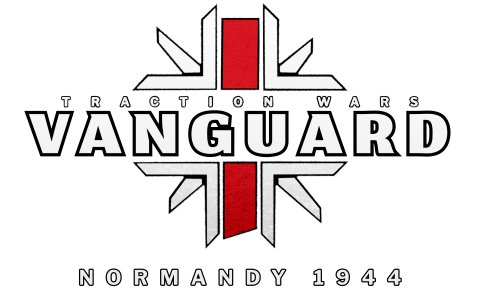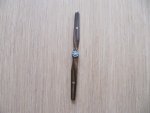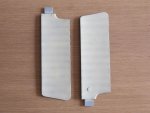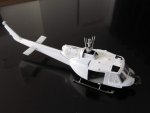th_battleaxe
Member
I'm back!!
After an arduous end of the semester, and 12 exams in a 16-day time frame, I got back to my stations.
Today, it'll only be a small update, since I didn't have a lot of time on my hands this weekend due to our need to restock on Walloon beer and a poorly timed football game.
I've glued the hull together, and I made a mock-up to give you an idea of the size of the finished model:
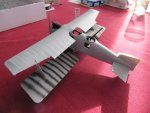
Due to the weight of the wings (they're moulded in one piece) the craft sits a bit gingerly on its legs, but they're perfectly capable of keeping it aloft. Next step will be dealing with the seams and apply some other pieces before paint.
I've also compiled a to-do list before the final paint coats can be put on.
- Drill holes for Lewis mount - Done
- Close the hull - Done
- Finish the propellor
- Clean the seams - In progress
- Assemble the tailplane
- Drill holes for rigging
- Fit turnbuckles
- Mask engine and cockpit
- Pre-shade hull
- Pre-shade top wings
That'll be all for now. If you've got questions, please ask.
After an arduous end of the semester, and 12 exams in a 16-day time frame, I got back to my stations.
Today, it'll only be a small update, since I didn't have a lot of time on my hands this weekend due to our need to restock on Walloon beer and a poorly timed football game.
I've glued the hull together, and I made a mock-up to give you an idea of the size of the finished model:

Due to the weight of the wings (they're moulded in one piece) the craft sits a bit gingerly on its legs, but they're perfectly capable of keeping it aloft. Next step will be dealing with the seams and apply some other pieces before paint.
I've also compiled a to-do list before the final paint coats can be put on.
- Drill holes for Lewis mount - Done
- Close the hull - Done
- Finish the propellor
- Clean the seams - In progress
- Assemble the tailplane
- Drill holes for rigging
- Fit turnbuckles
- Mask engine and cockpit
- Pre-shade hull
- Pre-shade top wings
That'll be all for now. If you've got questions, please ask.
